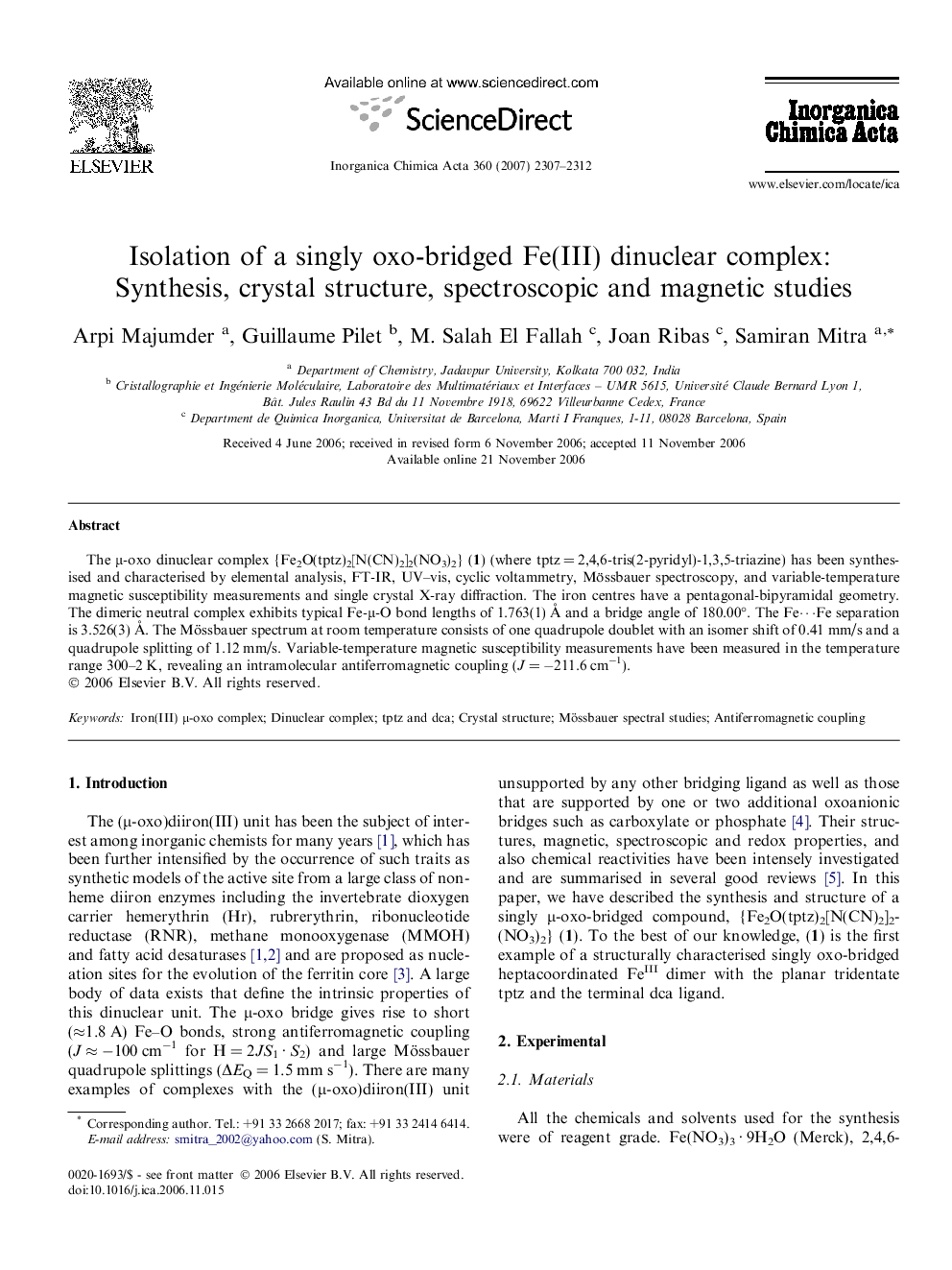| Article ID | Journal | Published Year | Pages | File Type |
|---|---|---|---|---|
| 1309765 | Inorganica Chimica Acta | 2007 | 6 Pages |
The μ-oxo dinuclear complex {Fe2O(tptz)2[N(CN)2]2(NO3)2} (1) (where tptz = 2,4,6-tris(2-pyridyl)-1,3,5-triazine) has been synthesised and characterised by elemental analysis, FT-IR, UV–vis, cyclic voltammetry, Mössbauer spectroscopy, and variable-temperature magnetic susceptibility measurements and single crystal X-ray diffraction. The iron centres have a pentagonal-bipyramidal geometry. The dimeric neutral complex exhibits typical Fe-μ-O bond lengths of 1.763(1) Å and a bridge angle of 180.00°. The Fe⋯Fe separation is 3.526(3) Å. The Mössbauer spectrum at room temperature consists of one quadrupole doublet with an isomer shift of 0.41 mm/s and a quadrupole splitting of 1.12 mm/s. Variable-temperature magnetic susceptibility measurements have been measured in the temperature range 300–2 K, revealing an intramolecular antiferromagnetic coupling (J = −211.6 cm−1).
Graphical abstractA mono-oxo bridged dinuclear complex, {Fe2O(tptz)2[N(CN)2]2(NO3)2} has been synthesised and characterised by elemental analysis, several spectroscopic measurements. X-ray diffraction study reveals that the Fe-centres are heptacoordinated. The complex is found to be antiferromagnetic with J = −211.6 cm−1.Figure optionsDownload full-size imageDownload as PowerPoint slide
